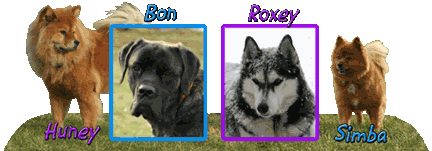Any camera experts out there? I love those photos of dogs (and others) where their noses are stuck up close to the camera and the lens makes the nose look SOOO big....
Anyone have an idea on what lens to use to create that look?? The picture below is not quite what I mean, but close...
Thanks for your help!







 Reply With Quote
Reply With Quote






 Huney, Bon & Simba-missed so very much
Huney, Bon & Simba-missed so very much
Bookmarks